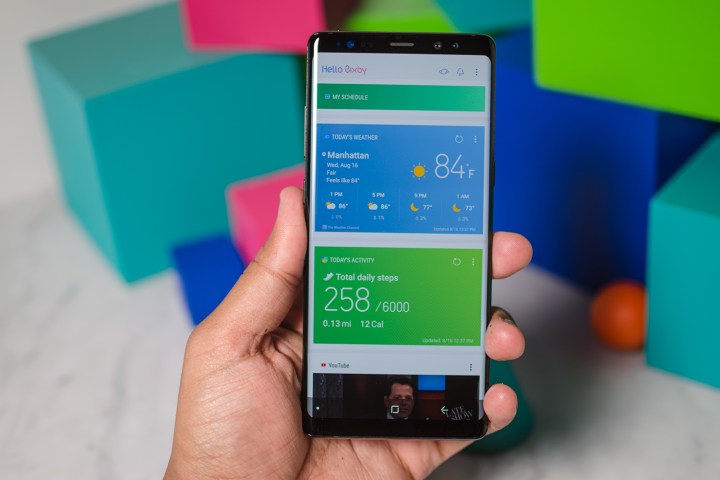
Bixby hasn’t exactly been the runaway success that Samsung hoped for when it introduced its own smart assistant last August. Unlike other A.I. assistants, such as Google Assistant, Amazon Alexa, or Microsoft Cortana, Samsung Bixby was meant to anticipate users’ needs and almost serve as an extra set of hands, editing photos, sending messages, and composing emails on command.
It was also slated to eventually control smart home appliances and Internet of Things devices, but so far, it seems as though it’s a bit less useful than we’d hoped for. But things may be looking up for the smart assistant, especially now that it’s growing its roster of third-party integrations. This week, TheScore announced that it will be bringing live sports scores and news from top sports leagues like the NBA, MLB, NFL, NHL, and EPL to Bixby.
While this may not seem like much, the move does represent an attempt by Samsung to make Bixby more applicable to users’ lives. Given the global popularity of sports and the frequency with which fans turn to their smartphones for updates, the addition of TheScore could serve Bixby well. The feature will make its debut in Bixby Home come August, and will allow users to create customized notifications based on sports or teams. However, it’s unclear how far-reaching the feature will actually be. On “select” Galaxy devices, you’ll be able to swipe right on home screens in order to get the most recent sports coverage.
Hopefully, Bixby will begin playing a larger role in our lives in the next several weeks. Samsung should be unveiling the Galaxy Note 9 in August, at which point the smart assistant should take center stage. This new flagship phone should feature an enhanced version of Bixby, named Bixby 2.0. Gray Lee, head of the A.I. Center under Samsung Research, has told the Korea Herald that the platform will be upgraded with enhanced language processes, improved noise resistance, and quicker response times.
Furthermore, Samsung has said that it plans to connect a total of 14 million products with Bixby this year and aims to connect them all by 2020. We’ll just have to see if it makes good on these promises.


